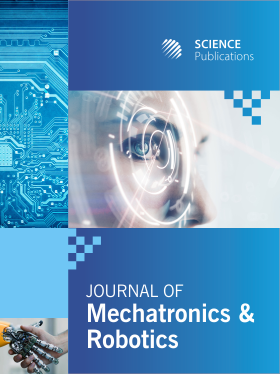About the Space Robots
- 1 Bucharest Polytechnic University, Romania
Abstract
Today, robots help us more than ever in all major operations, everyday life and become a daily reality, making it an integral part of major human projects. If they are still the majority in the machine industry, they will soon become as many in other industries and at the same time will grow strongly for human support in conquering extraterrestrial space in an extended campaign robot will have a role. We already have orbital space stations with robots, followed by others in the form of colonies on the Moon and on Mars and then a continuous expansion. At the same time, the expansion of scientific research and robot exploration, which has already exceeded the limits of our solar system, but unfortunately the power of the fission power fission, does not allow the probe to have greater autonomy at this time, which is imperative plus the development of robotic and automated systems to create new spatial energy sources. Opportunity (known as MER-B) or MER-1, called Oppy, is a robotic engine fueled from 2004 until the end of 2018. At NASA, Mars Exploration Rover landed at Meridiani Planum on January 25, 2009, ceased to communicate in 2010, while Opportunity managed to remain operational for an area of 5111 meters after landing, recharging solar batteries and hibernation storms. This careful operation allowed Opportunity to exceed its operating plan by 14 years, 46 days (during the Earth), 55 times the projected lifespan. Until June 10, 2018, when he first contacted NASA, Rover traveled at a distance of 45.16 km. The most important missions included the initial 90-mile mission, finding extramarital meteorites such as the Rock of Heat Shield and over two years exploring and studying Crater Victoria. Rover survived the moderate dust storms and in 2011 reached the Endeavor crater, which was described as the "second place to land." The Opportunity mission is considered one of NASA's most successful adventures. Curiosity is a small machine designed to explore the Mars Gale Crater within the NASA mission, Mars Science Laboratory (MSL). Curiosity was launched from Cape Canaveral on November 26, 2011, at 15:02 UTC and landed on Aeolis Palus in Gale on Mars on August 6, 2012, at 5:17 UTC. The Bradbury Landing Point was less than 2.4 km (1.5 mi) from the rover's target center after a 560-million-mile journey. The objectives of the rover include an investigation into Martian climate and geology; assessing whether the site selected in Gale has ever provided environmentally friendly environmental conditions for microbial life, including investigating the role of water; and studies on planetary habitats in preparation for human exploration.
DOI: https://doi.org/10.3844/jmrsp.2019.1.32

- 3,592 Views
- 2,119 Downloads
- 0 Citations
Download
Keywords
- Robots
- Mechatronic Systems
- Structure
- Dynamics
- Dynamics Systems
- Machines
- Space
- NASA
- Colonies on the Moon and on Mars
